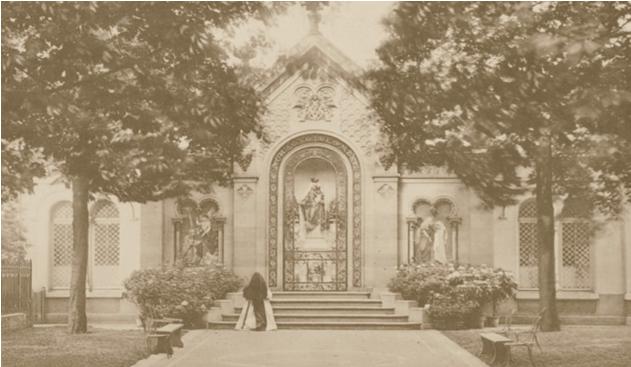History
“Prefer nothing whatever to Christ.”
St Benedict to the Cistercians
In the 6th century, St. Benedict, Abbot of a thriving community at Monte Cassino in Italy, wrote a Rule for monks. Drawing from the best of the earlier monastic traditions, his rule has been followed by countless monks and nuns for fifteen centuries. The Rule is pervaded by the spirit of the Gospel and characterised by its moderate and human approach. Above all, it is Christ centred; “Prefer nothing whatever to Christ” has inspired many to follow him according to the Benedictine tradition.
Icon of St. Benedict
The Cistercians
In the 11th century, 3 Benedictine monks, Ss Robert of Molesme, Alberic and Stephen Harding, sought to follow the Rule of St. Benedict in all its fulness. Along with a group of other monks who shared this vision of simplicity, austerity and fraternal life, they went to Citeaux in Burgundy, where the 'New Monastery' was established in March 1098.
They became known as the Cistercians.
The new monastery struggled at first, but in 1112, St. Bernard arrived with 30 of his male relatives and friends. Their arrival was to give Citeaux new life and energy. Soon the monastery grew so much that new foundations were made, including Clairvaux in 1115, of which St. Bernard was to be the Abbot.
Although St. Bernard was not one of the founders, he was to play a key role in the development of the new Order. By the time of his death in 1153, there were 353 monasteries of the order throughout Europe.
Many women wished to follow the Cistercian ideal and many houses were established including several in French Flanders.
Bernardine Cistercians of Esquermes
The Abbeys of Notre Dame de la Brayelle at Annay (1196) Notre Dame de la Woestine at St. Omer, (1217) and Notre Dame Des Près in Douai (1221) were three Cistercian houses for women in Flanders. In common with all monasteries in France, the Abbeys were suppressed and the members dispersed after the French Revolution in 1789.
The french Revolution saw the end of many monasteries in France. Three nuns, from each of the Abbeys, met together after the Revolution with the sole aim of re-establishing their Cistercian monastic life.
After many years in exile, spent travelling from place to place, they were finally able to settle at the small village of Esquermes, near Lille, and were officially recognised in 1827.



The three founding sisters wanted nothing more than to return to the Cistercian life that the French Revolution had forced them to leave. In 1936, building on the many informal links already made, spiritual links were officially established with the Cistercians of the Strict Observance. And in 1955, the Bernardines were officially recognised by the Church as an Order of Cistercian Nuns with solemn vows.



